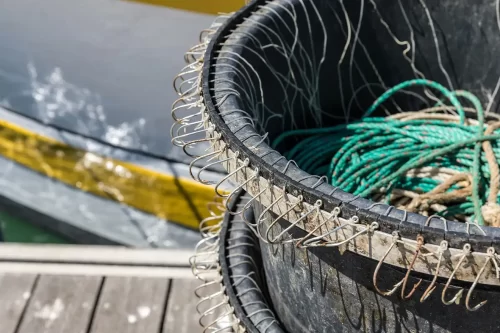To conserve or not to conserve

Protecting large portions of our oceans from extractive activities can provide enormous benefits to society: food provisioning, carbon storage and sequestration, tourism, storm attenuation and coastline stabilization are only a few of them. So, why do Marine Protected Areas (MPAs) cover only 4.8% of the ocean today?
When it comes to large-scale marine conservation, a country that closes its waters to fishing may stand to lose significant revenue. Meanwhile, neighboring countries would likely benefit, for free, from conservation in adjacent waters. But, what if you could design a market where the nation conserving its resources could charge its neighbours for these benefits? Could this further incentivize marine conservation? In this post, I’ll share some insights from our recent work on modelling markets and conservation and discuss how Global Fishing Watch was instrumental to test key predictions of our model in the real world.
The Parties to the Nauru Agreement
Our team looked at Kiribati’s decision to establish the Phoenix Island Protected Area (PIPA), a 397,447 sq km no-take zone, within the context of the Parties to the Nauru Agreement (PNA). The PNA is a collective of nine Pacific Island Nations who jointly manage purse seine tuna fisheries in their waters using an innovative management scheme, a market in which they sell access to its waters. A tuna purse seiner must pay an access fee of about $12,000 USD to fish for 24 hours in the PNA’s tuna-rich waters. PNA countries can also trade “fishing days” between themselves, which allows them to adjust for fish moving in response to environmental variation, like El Niño.

These nations derive enormous profits from selling fishing access fees, sometimes more than half of a nation’s GDP. When a country decides to create a large-scale MPA, it can no longer charge vessels to fish within the protected bounds, which could represent enormous economic losses. So, why would a country close a portion of its waters to fishing when it could profit from that fishing activity?
Our modelling and simulation exercises show that the very market used by the PNA to manage fisheries could also enable conservation. It works like this: Imagine a nation that closes 100% of its waters to fishing. In doing so, it protects fish populations and provides spillover benefits to neighboring nations. The conserving nation can no longer sell fishing days in its waters, but thanks to the PNA’s market-based approach to management, it can sell its fishing rights to the neighboring nations. Since these neighbors now have more fish due to spillover from the conserving nation’s water, fishers would want to fish there too.
Contrasting models with the real world
Our model made two predictions: First, that implementing an MPA would cause vessels to redistribute to neighboring areas, where they would still pay to fish. And second, that the conserving country would see a large drop in fishing effort within its waters, but a small drop in revenue, because it would sell fishing rights to neighboring countries. In order to test these predictions, we needed to track fishing vessels before and after the implementation of an MPA. This is when Global Fishing Watch (GFW) became a gamechanger to us.
Thanks to AIS-derived vessel-tracking data collected, curated, and maintained by GFW, we were able to track 318 tuna purse seiners that fished in PNA waters between 2012 and 2018. PIPA was implemented in 2015, right in the middle of the time series. We divided these 313 vessels into two groups. 64 of them fished within PIPA waters between 2012 and 2015, before the MPA was implemented; we call these the “displaced” vessels. The remaining 254 vessels fished elsewhere in the PNA, but never in PIPA waters.
We used the non-displaced vessels as a control group that was exposed to the same environmental variations, but that was not displaced by an MPA. We derived the fishing footprint of each group before and after PIPA went into effect, and calculated the change in fishing footprint of displaced vessels through time, relative to that of the non-displaced vessels. This allowed us to see where displaced vessels relocated to, after PIPA was implemented. As we predicted, they redistributed to neighboring PNA waters, where they still have to pay to fish.
To test our second prediction, we combined fishing effort data from GFW with data on national-level revenues from rights fees. For Kiribati, we observed that effort decreased by 35%, while revenues only dropped by 20%. This suggests that Kiribati sold the rest of its fishing rights to other countries, where displaced vessels wanted to fish.
Markets and the future of Marine Conservation
The PNA’s innovative market-based approach to fisheries management is viewed as a great success. By also enabling and promoting the much-needed large-scale conservation interventions, PNA countries may also have become pioneers in effective large-scale marine conservation in a market-based setting.
Of course, this approach requires close monitoring of fishing activity to make sure that everyone’s paying their access fee. The PNA already uses vessel-tracking systems to keep tabs on the authorized fishing vessels. And cutting-edge, open-source datasets like the ones produced by GFW can play an important role in research, as well as help inform management and policy.


